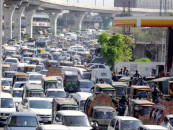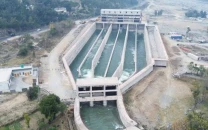Bumpy road to sustainability
The transport sector is one of Pakistan's biggest contributors to carbon emissions

Pakistan's formal unveiling of the National Electric Vehicle (NEV) Policy 2025-30 marks a long-overdue step in the right direction — but one that also lays bare the country's chronic struggle to balance ambition with reality. While the government's goal of having 30 per cent of all new vehicles sold by 2030 be electric appears visionary, the road leading to that destination is littered with financial and structural potholes.
The transport sector is one of Pakistan's biggest contributors to carbon emissions, and tackling it is essential if the country is to meet its climate targets. On paper, the benefits of this transition are undeniable — saving 2.07 billion litres of fuel annually; trimming $1 billion in foreign exchange outflow; reducing greenhouse gas emissions by 4.5 million tonnes; and cutting national healthcare-related costs by $405 million, among others.
The inclusion of a gender-sensitive subsidy policy that reserves 25 per cent of electric bikes and rickshaws for women is also a welcome nod to inclusive mobility. But ambition without planning is a recipe for frustration. With an initial subsidy of just Rs9 billion allocated for the coming fiscal year, the numbers are unlikely to move the needle in any meaningful way. The affordability of New Energy Vehicles remains a serious question. For the average Pakistani struggling to make ends meet, an electric bike or car — even subsidised — remains out of reach.
The transition to sustainable energy in transport must be part of a broader, systemic green strategy. Piecemeal efforts, no matter how noble, will be easily overwhelmed by the inertia of structural inefficiencies and economic constraints. In a country battling an energy and climate crisis, sustainability must be rooted in pragmatic, long-term planning and above all the needs of the average citizen.














COMMENTS
Comments are moderated and generally will be posted if they are on-topic and not abusive.
For more information, please see our Comments FAQ